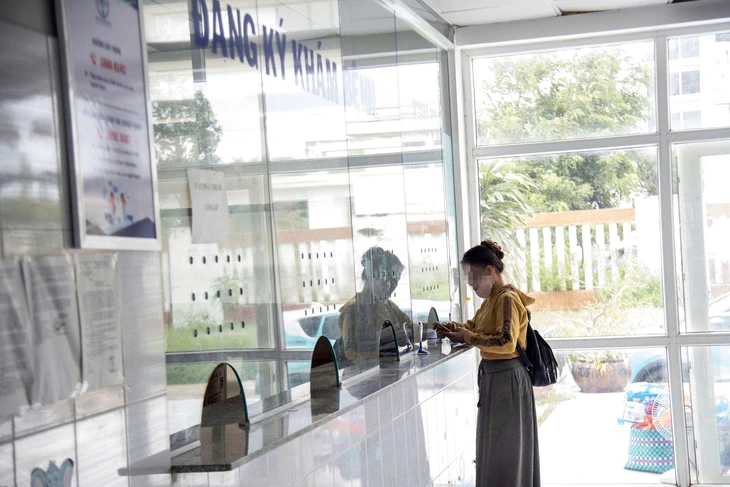
The area for medical examination registration and waiting for medicine at Binh Duong Tuberculosis and Lung Disease Hospital (Binh Duong Ward, Ho Chi Minh City) is sparsely populated with patients - Photo: TRI DUC
Currently, while the final level hospitals specializing in obstetrics and oncology in Ho Chi Minh City are often overloaded with a large number of patients from other provinces coming for examination and treatment, in Binh Duong and Ba Ria - Vung Tau (old), there are many old hospitals that are abandoned and seriously degraded.
Overcrowded places, abandoned places
Overload has been the reality for many years at the end-line hospitals in Ho Chi Minh City: Oncology, Tu Du, Psychiatric... To meet the needs of patients, these hospitals must operate at full capacity. Patients from the Central and Western provinces must travel hundreds of kilometers to rent rooms around the hospital, lining up from 12 o'clock the night before to wait for examination and treatment.
Ho Chi Minh City Oncology Hospital, the largest cancer treatment hospital in the country, has put its second facility (Thu Duc, with an investment of nearly 6,000 billion VND) into operation since 2023, but after more than a year it has fallen into a state of overload.
Tu Du Hospital receives more than 1 million women for medical examination each year, of which about 60% are from the provinces. Patients have to travel long distances to access end-of-line medical services, which not only wastes time and money but also increases pressure on the health system in the center of Ho Chi Minh City.
The situation is similar at the Mental Hospital and Pham Ngoc Thach Hospital.
Meanwhile, hospitals in Binh Duong and Ba Ria - Vung Tau (old) are degraded and deserted. Currently, Binh Duong Psychiatric Hospital is completely closed, with only security guards. The walkways between the buildings are overgrown with grass up to a meter high. On the opposite side, Binh Duong Tuberculosis and Lung Disease Hospital is a little better, being partly used as an infectious disease - tuberculosis department, but only on a small scale, the remaining parts are overgrown with grass.
Mr. Mai, a local resident, said: "Every time I have to go to Binh Duong General Hospital, I feel fed up when I see this hospital overloaded, patients and their families have to lie down in the hallways. Yet the new Binh Duong General Hospital is still not finished, and these two specialized hospitals are abandoned, what a waste."
Upgrade facilities to reduce load
Faced with the above situation, the Ho Chi Minh City Department of Health has proposed to supplement the health sector planning in the Binh Duong and Ba Ria - Vung Tau areas. In the Ba Ria - Vung Tau area, the Department of Health proposed a policy for specialized hospitals in obstetrics and gynecology (Tu Du Hospital or Hung Vuong Hospital) to develop a second facility at the old Le Loi Hospital, and at the same time allow the Oncology Hospital to develop a second facility at the old Ba Ria Hospital.
Similarly, in Binh Duong, Pham Ngoc Thach Hospital should set up its second facility at Binh Duong Tuberculosis and Lung Disease Hospital and the Mental Hospital should set up its fourth facility at the Mental Health Hospital; quickly and urgently repair these two abandoned hospitals so they can be put into use soon.
On October 22, the Ho Chi Minh City People's Committee agreed on this policy. Speaking with Tuoi Tre , Mr. Tran Ngoc Hai - Director of Tu Du Hospital - said that the policy of building a new facility specializing in obstetrics and gynecology at the end of the line in Ba Ria - Vung Tau is a strategic proposal.
According to Dr. Hai, this proposal not only aims to solve urgent health problems but is also consistent with the city's socio-economic development orientation in the new period, especially after the merger when the population has exceeded 14 million people.
Currently, the quality and accessibility of health services, especially tertiary care, still have significant differences between the central area and the surrounding areas. People in areas such as the old Ba Ria - Vung Tau still face many difficulties in accessing advanced medical techniques due to limitations in geographical distance and medical infrastructure.
At the Ho Chi Minh City Oncology Hospital, Dr. Diep Bao Tuan - Hospital Director - said the number of patients coming to the hospital for examination is on the rise.
"The construction of another facility of the Ho Chi Minh City Oncology Hospital in Ba Ria is very necessary to serve people in neighboring provinces. This is also an important solution to help reduce the load on the current facilities 1 and 2 of the hospital," said Dr. Tuan.
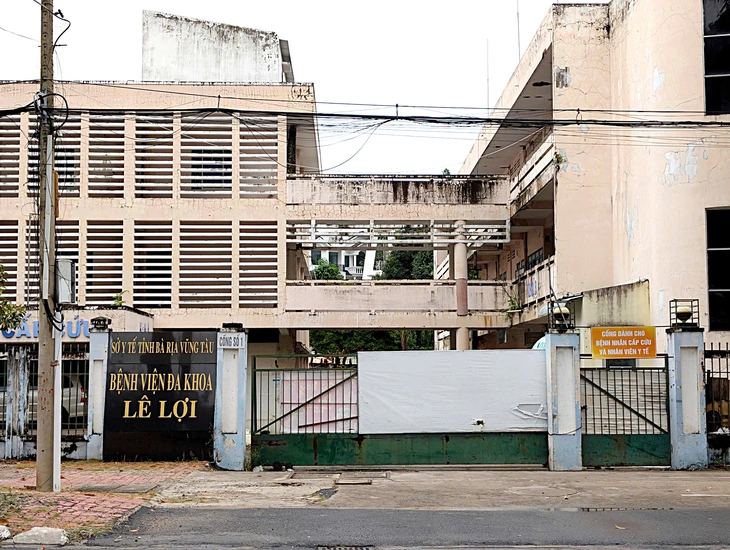
The old Le Loi Hospital (address 22 Le Loi Street, Vung Tau Ward) is proposed to be the base of 2 final-level specialized hospitals in obstetrics and gynecology (Tu Du Hospital or Hung Vuong Hospital) - Photo: DONG HA
High feasibility
The Director of Tu Du Hospital also said that as a fully financially autonomous public service unit (group 1), Tu Du Hospital is completely capable of being autonomous in terms of capital for the new facility through the use of the existing career development fund of nearly 3,000 billion VND, without needing to use the city budget.
Regarding human resources, with a team of more than 330 highly qualified doctors, the hospital is capable of coordinating and arranging personnel for the new facility without affecting professional activities at the main facility.
Ho Chi Minh City Oncology Hospital believes that the development of facilities 2 and 3 will not only help reduce the load on the central health system, shorten the gap in health care, save costs, time and effort for patients. At the same time, it is consistent with the trend of people having regular health check-ups and screenings, avoiding overload at central hospitals.
According to the Director of the Ho Chi Minh City Department of Health, Tang Chi Thuong, the above proposals are a breakthrough solution. This is a completely feasible direction, bringing many benefits to the people because the leading hospitals have enough capacity to expand their operations, the city only needs to allocate land and support a part of the budget to invest in building these hospital facilities.
This approach is more effective than establishing new hospitals, because the brand and reputation of leading hospitals will help quickly attract people to come for medical examination and treatment. To implement, there needs to be close coordination between departments and branches, especially in prioritizing land funds for healthcare.
Mr. Thuong also added that over the years, the models of satellite hospitals, satellite clinics, and satellite departments have shown remarkable effectiveness. The main force in this network is the "core hospitals" such as the Oncology Hospital, People's Hospital 115, Orthopedic Trauma Hospital, Children's Hospital 1... which have transferred techniques, provided professional training, and provided intensive support very effectively to the lower levels.
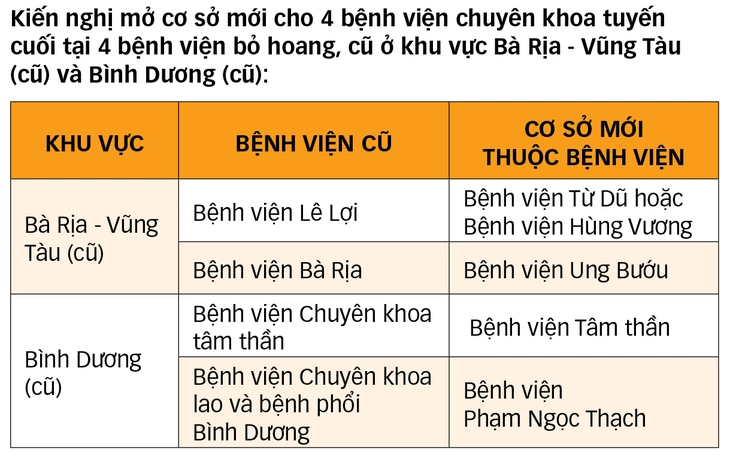
Source: Ho Chi Minh City Department of Health
Reduce costs for people
Mr. NHT (residing in Vung Tau ward, retired doctor) said that the establishment of new facilities by the Oncology Hospital, Tu Du Hospital or Hung Vuong Hospital in Ba Ria - Vung Tau will bring many benefits to the people.
"Obviously, having a leading hospital here will make people very excited. Not only people from Ba Ria - Vung Tau but also patients from Dong Nai and old Binh Thuan (now Lam Dong - PV) will come for examination and treatment. People will be provided with high-quality medical services and will also save a lot of costs when having to go to Ho Chi Minh City," said Mr. T.
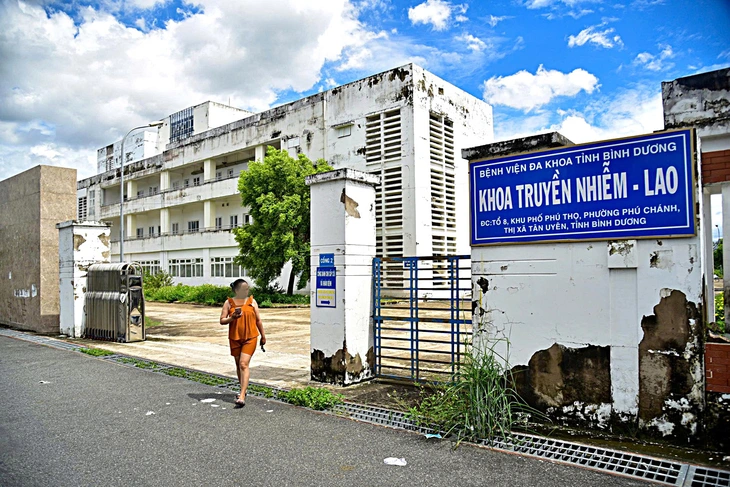
Many items of Binh Duong Tuberculosis and Lung Disease Hospital are seriously degraded, however there are still patients being treated here - Photo: TRI DUC
Emergency repairs pending renovation
In order to put the old hospitals into effective operation soon, the Department of Health has asked the Board of Directors of the Mental Hospital and Pham Ngoc Thach Hospital to prepare human resources in both expertise and hospital management according to the established project, and to put them into operation as soon as the two buildings have been repaired and renovated.
The Department of Health also recommended that the City People's Committee direct the Binh Duong Province Construction Investment Project Management Board to promptly implement the conclusions of the State Audit of Region IV and make final settlements to have a basis for additional funding to repair the two projects. At the same time, promptly complete the legal procedures for the project of two specialized hospitals for tuberculosis, lung disease and psychiatry. In particular, allow for urgent repairs with an investment level of 15 billion VND for each hospital.
Leverage for medical tourism development
According to Dr. Diep Bao Tuan - Director of Ho Chi Minh City Oncology Hospital, Ba Ria - Vung Tau and Binh Thuan (old) are coastal areas, very favorable for developing medical tourism models. The construction of an oncology hospital here not only contributes to improving the quality of health care but also creates a lever for developing medical tourism.
Especially if investing in a high-tech cancer screening center, this area can attract international tourists for treatment and relaxation, as well as meet the needs of neighboring people.
The same can be said for high-quality surgery, childbirth and convalescence in the old Ba Ria - Vung Tau area if the specialties are expanded like Tu Du Hospital here.
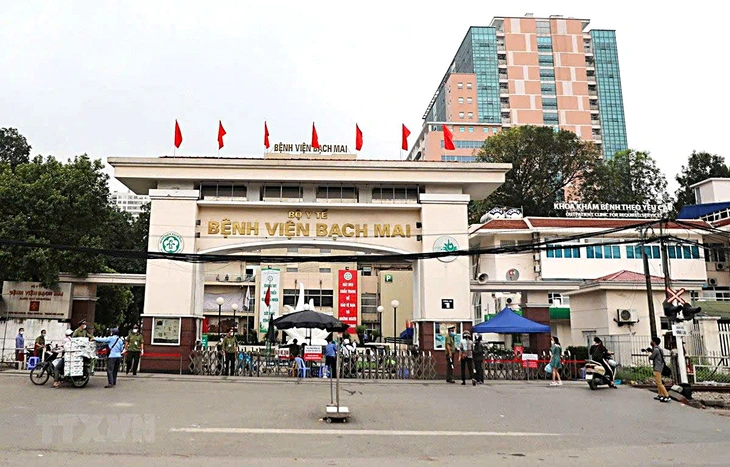
The Ministry of Health proposed that Hospital E be merged into Bach Mai Hospital, forming a hospital chain - Illustration photo: TTX
Ministry of Health proposes merging many hospitals
According to the plan proposed by the Ministry of Health, many medical facilities will maintain the management model under the Ministry of Health, some will merge or transfer to localities and medical training facilities to increase exploitation efficiency.
The Ministry of Health currently directly manages 90 units (including 4 hospitals that will be handed over in 2025).
Of the 39 hospitals under the Ministry of Health, the ministry proposed that 25 hospitals continue to be under the ministry, 2 hospitals merge into other units, and the rest be transferred as is or become facilities of other hospitals.
According to the project, central hospitals such as Bach Mai, Viet Duc, K, Central Children's Hospital, Central Obstetrics and Gynecology Hospital, Cho Ray Hospital, Thong Nhat Hospital... will maintain their organizational model to continue playing a leading role in treatment, training and scientific research.
The remaining medical facilities will be reorganized by merging with large hospitals, transferring them to localities or becoming practice hospitals for medical universities.
Some specialized hospitals will be merged into central general hospitals or large-scale units. For example, the Can Tho Orthopedic - Rehabilitation Hospital will be merged into Can Tho Central General Hospital; the Ho Chi Minh City Orthopedic - Rehabilitation Hospital will be merged into Thong Nhat Hospital; Hospital E will be merged into Bach Mai Hospital, becoming a facility of Bach Mai Hospital, aiming to form a hospital chain.
Some specialized hospitals will be handed over in their original state to their localities, such as Quy Hoa Central Leprosy and Dermatology Hospital to Gia Lai, Central Hospital 74 to Phu Tho, and Quang Nam Central General Hospital to Da Nang.
The Ministry of Health has proposed that a number of hospitals be transferred to become practice hospitals for medical universities. At the same time, the Ministry of Health will reorganize the disease prevention sector to build a strong national center for preventive medicine. According to the proposal, the National Institute of Hygiene and Epidemiology will continue to be under the Ministry of Health and at the same time become the center for performing the functions of the central CDC.
These proposed plans are built according to a suitable roadmap to ensure succession, avoid disruption of professional activities and best serve the people.
The Ministry of Health has proposed a plan to rearrange and reorganize the system of public service units.
In Hanoi, the People's Committee has issued a plan to implement the project "Improving the quality of medical examination and treatment at public health facilities under the Hanoi People's Committee by 2030".
The Hanoi Department of Health plans to reorganize hospitals, including merging Mai Huong Daytime Psychiatric Hospital into Hanoi Psychiatric Hospital (implemented in the fourth quarter of 2025) and merging Hanoi Traditional Medicine General Hospital and Ha Dong Traditional Medicine Hospital into Hanoi Traditional Medicine General Hospital (expected in the fourth quarter of 2026).
In this plan, the city plans to develop a project to develop four hospitals that will take on regional functions and build a project to establish new hospitals, upgrade facilities and develop medical human resources.
Source: https://tuoitre.vn/tp-hcm-nang-cap-benh-vien-cu-them-co-so-moi-cho-benh-vien-chuyen-khoa-20251027083615555.htm


![[Photo] The 5th Patriotic Emulation Congress of the Central Inspection Commission](https://vphoto.vietnam.vn/thumb/1200x675/vietnam/resource/IMAGE/2025/10/27/1761566862838_ndo_br_1-1858-jpg.webp)
![[Photo] National Assembly Chairman Tran Thanh Man receives Chairman of the House of Representatives of Uzbekistan Nuriddin Ismoilov](https://vphoto.vietnam.vn/thumb/1200x675/vietnam/resource/IMAGE/2025/10/27/1761542647910_bnd-2610-jpg.webp)
![[Photo] Party Committees of Central Party agencies summarize the implementation of Resolution No. 18-NQ/TW and the direction of the Party Congress](https://vphoto.vietnam.vn/thumb/1200x675/vietnam/resource/IMAGE/2025/10/27/1761545645968_ndo_br_1-jpg.webp)









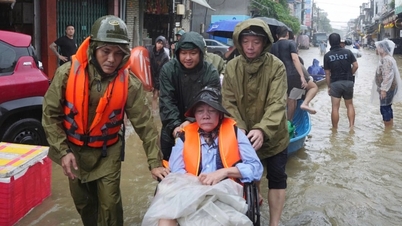



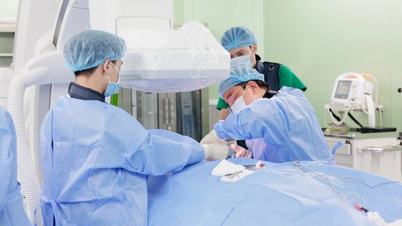

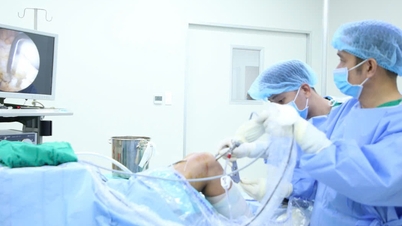





























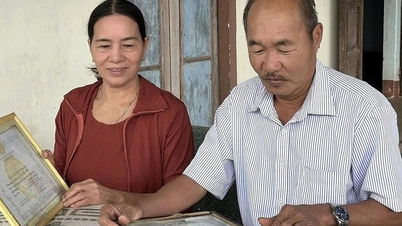
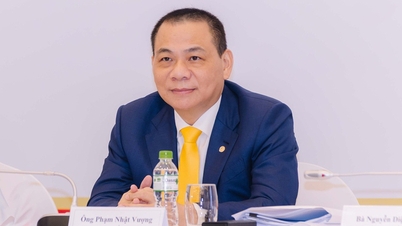




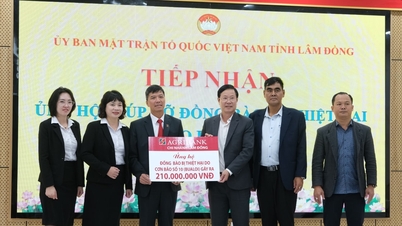












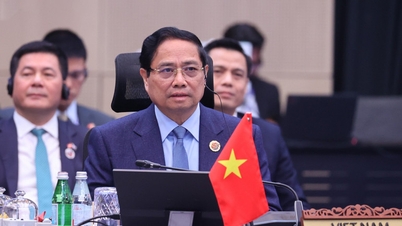
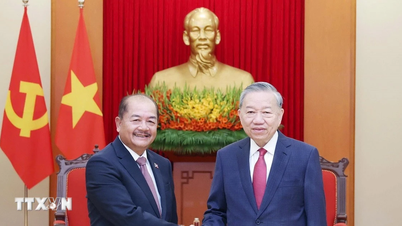



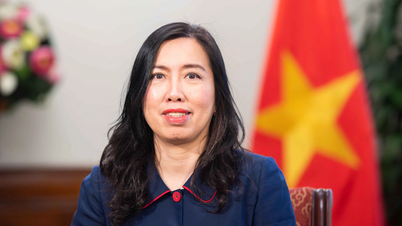
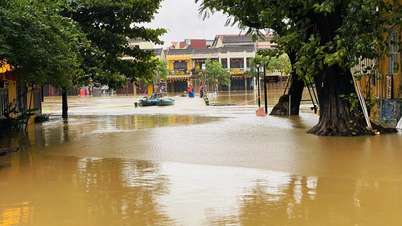





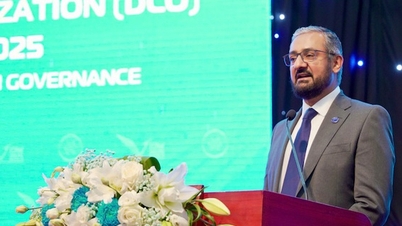








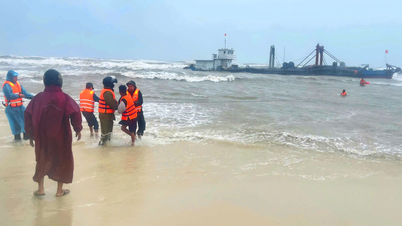
















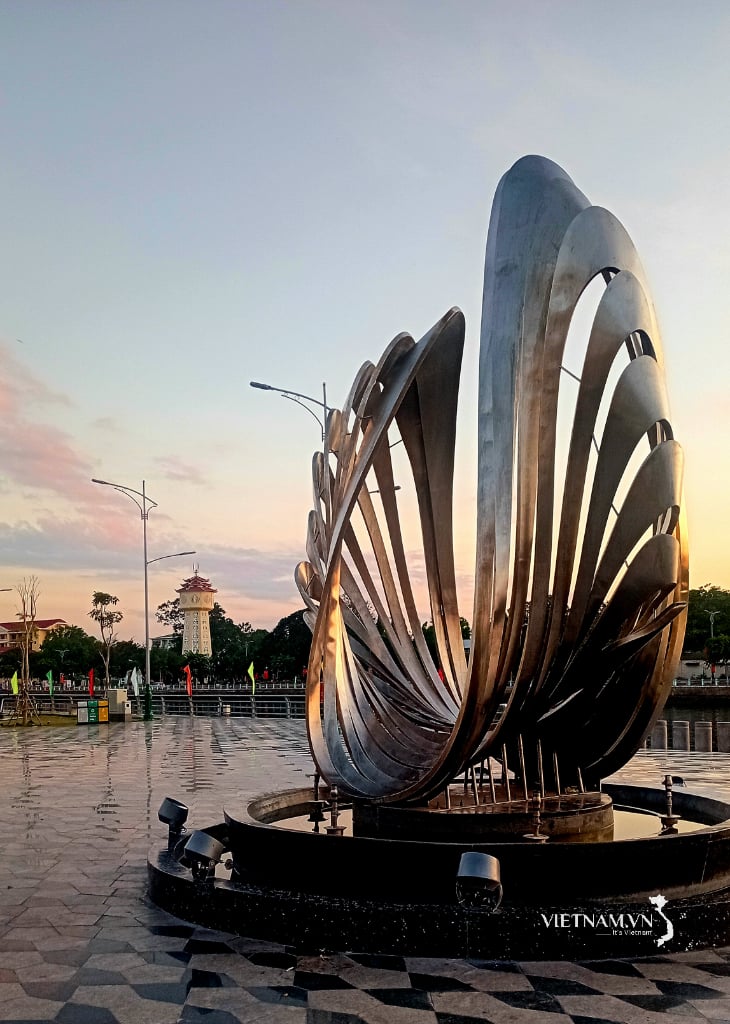
Comment (0)